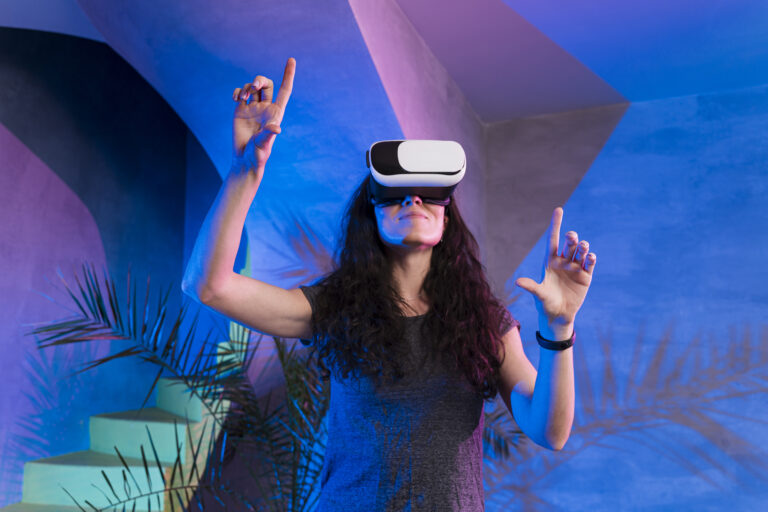The Role of Technology in Enhancing Collaboration
In today’s interconnected world, collaboration is more critical than ever. Whether it’s a team working on a project across different time zones or a creative brainstorming session, effective collaboration can make the difference between success and failure. Technology has become a powerful enabler of collaboration, breaking down barriers and bringing people together like never before. Let’s explore how technology is enhancing collaboration and transforming the way we work.
Breaking Down Geographical Barriers
One of the most significant ways technology enhances collaboration is by breaking down geographical barriers. With tools like video conferencing, instant messaging, and cloud-based collaboration platforms, teams can work together seamlessly, no matter where they are located. Platforms like Zoom, Microsoft Teams, and Slack have become indispensable, allowing team members to communicate in real-time, share ideas, and make decisions quickly.
Imagine a team member in New York brainstorming with a colleague in Tokyo without the need for extensive travel. This not only saves time and money but also allows for more frequent and spontaneous collaboration, fostering creativity and innovation.
Real-Time Collaboration Tools
Real-time collaboration tools have transformed the way we work on documents, presentations, and other projects. Gone are the days of emailing files back and forth and dealing with version control issues. Platforms like Google Workspace and Microsoft 365 enable multiple people to work on the same document simultaneously, seeing each other’s changes in real-time.
These tools also come with integrated communication features, such as comments and chat, making it easy to discuss ideas and provide feedback without leaving the document. This level of integration streamlines the collaborative process, making it more efficient and effective.
Project Management and Coordination
Effective collaboration requires good organization and coordination. Technology provides powerful project management tools that help teams stay on track and meet their goals. Platforms like Trello, Asana, and Monday.com allow teams to create tasks, set deadlines, assign responsibilities, and track progress in a visually intuitive way.
These tools offer transparency, so everyone on the team knows what needs to be done, who is responsible, and when tasks are due. This visibility helps prevent misunderstandings and ensures that everyone is aligned and working towards the same objectives.
Enhanced Communication
Clear and consistent communication is at the heart of successful collaboration. Technology has given us a plethora of communication tools that cater to different needs and preferences. From instant messaging apps like Slack to video conferencing solutions like Zoom, there are countless ways to stay connected.
These tools also integrate with other collaboration platforms, creating a cohesive ecosystem that supports all aspects of team interaction. For example, a project management tool might integrate with a messaging app, allowing team members to discuss tasks directly within the project interface. This seamless communication reduces the friction that can occur when using multiple, disconnected tools.
Collaborative Learning and Development
Technology also plays a crucial role in collaborative learning and development. Online learning platforms and virtual training sessions make it possible for teams to upskill together, regardless of their location. Interactive features such as discussion forums, group projects, and live Q&A sessions facilitate peer-to-peer learning and knowledge sharing.
This collaborative approach to learning ensures that team members are not only gaining new skills but also building stronger connections and a sense of camaraderie. It fosters a culture of continuous improvement and mutual support, which is essential for long-term success.
Fostering Creativity and Innovation
Collaboration is a key driver of creativity and innovation. Technology provides tools that make brainstorming and creative problem-solving more dynamic and engaging. Digital whiteboards like Miro and MURAL allow teams to visualize ideas, create mind maps, and collaborate on designs in real-time.
These tools can be used in virtual brainstorming sessions, where team members can contribute ideas simultaneously, building on each other’s input. This collective creativity often leads to more innovative solutions and a more vibrant, collaborative culture.
The Human Touch
While technology greatly enhances collaboration, it’s essential to remember the human touch. Building trust, maintaining open communication, and fostering a positive team culture are crucial elements of effective collaboration. Technology should be seen as a tool that supports these human aspects, rather than replacing them.
Embracing the Future
As technology continues to evolve, the possibilities for enhancing collaboration are endless. Emerging technologies like artificial intelligence, virtual reality, and augmented reality will further transform how we work together. AI can provide insights and automate routine tasks, freeing up time for more meaningful collaboration. VR and AR can create immersive virtual environments for team meetings and creative sessions, making remote collaboration feel more personal and engaging.
In conclusion, technology is playing a pivotal role in enhancing collaboration. By breaking down geographical barriers, enabling real-time collaboration, improving communication, and fostering creativity, technology is transforming the way we work together. As we embrace these tools and continue to innovate, the potential for collaboration will only grow, leading to greater achievements and a more connected world. So, let’s leverage technology to its fullest and unlock the power of collaboration.






